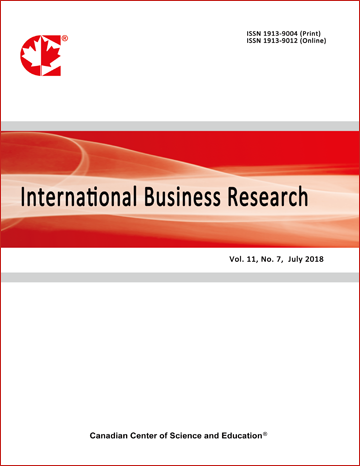An Analysis of Aggregate Market Liquidity: The Case of Amman Stock Exchange
- Dima Waleed Hanna Alrabadi
Abstract
The purpose of this study is to analyze the behavior, the day-of-the-week regularities and the macroeconomic determinants of aggregate market liquidity of emerging stock markets through studying Amman Stock Exchange (ASE). The study investigates all the stocks traded in ASE over the period 2002-2010. Aggregate market liquidity is measured by several proxies, each reflecting a certain dimension. It is calculated as an average of individual stock liquidity proxies and as a sum of trading activity measures. Aggregate market liquidity shows a fluctuating pattern throughout the study period. It gets worse in the mid-week. Spread and depths show their maximum values on Mondays and Sundays, respectively. The trading activity reaches its minimum on Sunday and its maximum on Thursday. Major macroeconomic factors significantly affect aggregate market liquidity, though; aggregate market return and volatility exercise a larger effect. This study is the first to conduct a comprehensive analysis of aggregate market liquidity in an emerging stock market.- Full Text:
 PDF
PDF
- DOI:10.5539/ibr.v5n5p184
Journal Metrics
h-index (January 2024): 102
i10-index (January 2024): 947
h5-index (January 2024): N/A
h5-median(January 2024): N/A
( The data was calculated based on Google Scholar Citations. Click Here to Learn More. )
Index
- Academic Journals Database
- ACNP
- ANVUR (Italian National Agency for the Evaluation of Universities and Research Institutes)
- CNKI Scholar
- COPAC
- CrossRef
- EBSCOhost
- EconBiz
- ECONIS
- EconPapers
- Elektronische Zeitschriftenbibliothek (EZB)
- EuroPub Database
- Excellence in Research for Australia (ERA)
- Genamics JournalSeek
- Google Scholar
- Harvard Library
- IBZ Online
- IDEAS
- Infotrieve
- Kobson
- LOCKSS
- Mendeley
- MIAR
- Norwegian Centre for Research Data (NSD)
- PKP Open Archives Harvester
- Publons
- Qualis/CAPES
- RePEc
- ResearchGate
- ROAD
- Scilit
- SHERPA/RoMEO
- SocioRePEc
- Technische Informationsbibliothek (TIB)
- The Keepers Registry
- UCR Library
- Universe Digital Library
- ZBW-German National Library of Economics
- Zeitschriften Daten Bank (ZDB)
Contact
- Kevin DuranEditorial Assistant
- ibr@ccsenet.org
